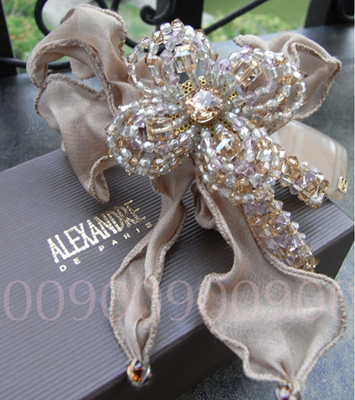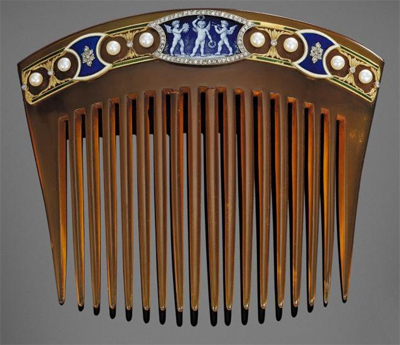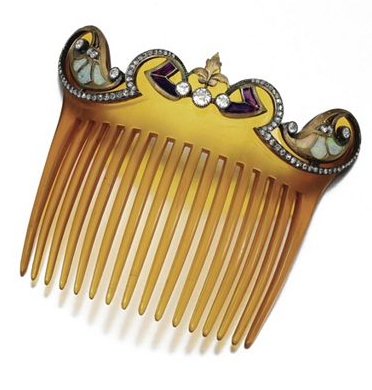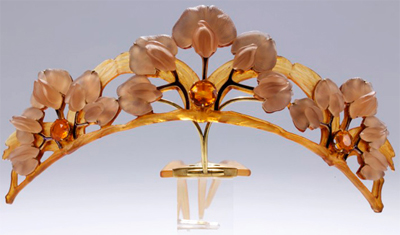This tortoise comb from Cartier was made c. 1920. The hinged tiara is a carved coral segment framed in pearls, decorated with 1.15 carats of old European-cut diamonds. It is signed Cartier, Paris, and numbered 0000 and 0288 (maker’s marks). It also has French Assay marks, with an estimated value is $10,000 to $15,000.

This Chinese white-jade comb comes from the Tang Dynasty (618–907). The authenticity of its age can be verified because it is listed in “Jades in the Hei-Chi Collection,” Beijing, 2006, p. 135. Its estimated value is $9000.


















